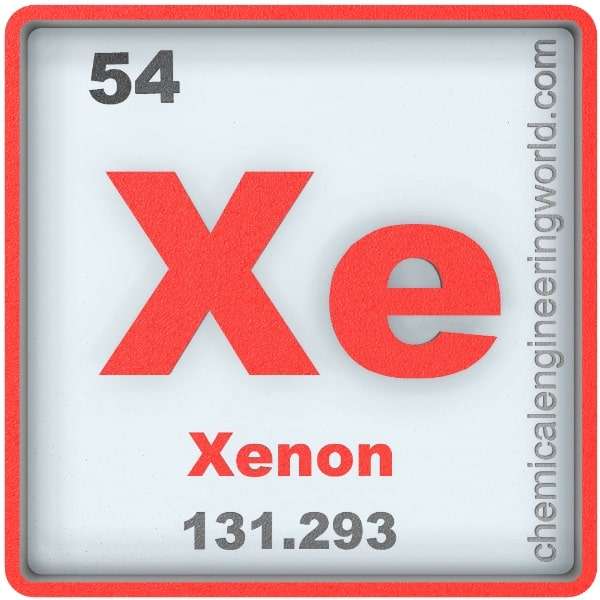Xenon Element Properties and Information

Xenon Element Properties and Information
Xenon is 54th element on the periodic table. Elements are arranged in the periodic table on the basis of the atomic number. Atomic number is the number of protons in the nucleus of the atom. Xenon has an atomic number of 54. It is located in the Group 18 and Period 5 of the periodic table of elements. It is denoted by Xe. The name is derived from the Greek word ‘Xenos’ which means Stranger.
William Ramsay and Morris Travers had already extracted neon, argon, and Krypton from liquid air. They wondered if there are more rare gases. Ludwig Mond gave them a new liquid-air machine using which they repeatedly distilled the air and isolated a heavier gas which emitted a blue glow in vacuum tube. They classified it to belong to inert gas group and called it Xenon. They discovered the rare gas in 1898. Neil Bartlett eventually showed that xenon is not totally inert, he made a fluorine derivative in 1962 and so far there are about 100 xenon compounds.
Xenon is a very rare gas and it is found in atmosphere only in the amounts of 0.086 ppm by volume. It is also found in gases which evolve from certain mineral springs. It is obtained commercially by extraction from liquid-air.
Physical Properties
- Xenon is a colourless, odourless, dense gas which is quite un-reactive in nature.
- The atomic mass of xenon is 131.29
- The melting point of xenon is -112°C
- The boiling point of xenon is -107°C
- The density of xenon is 5.9 in S.I. units at 20°C
- Xenon has emits bright blue glow in a vaccum tube.
- Liquid xenon has very high polarizability. It is capable of dissolving hydrocarbons, biological molecules, and even water.
- Under enormous pressures, on the order of gigapascals, the xenon forms a metallic phase.
- Metallic xenon appears light blue in colour because it absorbs red light and transmits other visible frequencies.
- Xenon is composed of 7 naturally occurring isotopes.
Chemical Properties
- Xenon belongs to zero-valence group of elements which means it is inert.
- It is quite un-reactive in ususal conditions and is not subject to common reactions.
- First Xenon compound was a fluorine derivative.
- Xenon is also observed to form halides, oxides, and oxo-acids.
Methods of Production
Fractional Distillation: The liquid air is treated in a double column plant. After which the oxygen is said to contain samll quantities of Krypton and xenon. This oxygen is enriched to have 0.1-02% of krpton/xenon which is either extracted by absorption in silica gel or using distillation. The krypton and xenon are separated by further distillation.
Relevance in Chemical and Related Industries
Xenon has no relevant commercial use.
Relevance in Other Industries
Optics: Xenon finds wide use in illumination; it is used in light-emitting devices, photographic flashes, stroboscopic lamps, and lasers.
Health Effects on Exposure
Inhalation: Xenon is an asphyxiant gas which means that upon inhaling it will cause dizziness and nausea. Large doses also cause vomiting and may even cause death.
Effects on Surroundings
Xenon is a non-toxic and largely inert gas hence it doesn’t affect the environment.
References:
https://en.m.wikipedia.org/wiki/Xenon
































